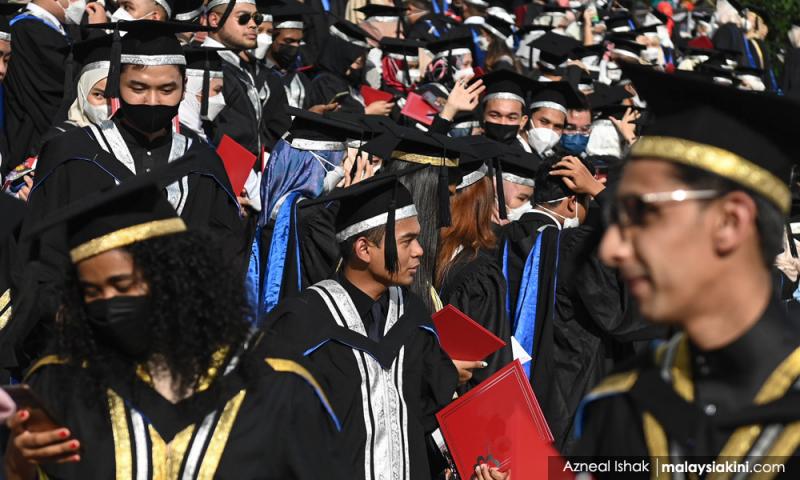LETTER | Affirmative action in education still practised - 66 years later
LETTER | Recently, the US Supreme Court rejected race-based affirmative action at US colleges and universities. It said that such action “lacks sufficiently focused and measurable objectives warranting the use of race, unavoidably employs race in a negative manner, involves racial stereotyping and lacks meaningful endpoints.”
Further, “the student must be treated based on his or her experiences as an individual – not on the basis of race”.
This decision is relevant to the debate in Malaysia regarding the racial education quota affirmative action in favour of the bumiputeras.
Sixty-six years after Merdeka, why are we still negatively stereotyping bumiputeras students as being unable to compete with non-bumiputeras students on a level playing field?
Are bumiputeras students so different that they still require affirmative action to compete with non-bumiputeras students? Shouldn’t we be treating any Malaysian student based on his or her experiences as an individual, and not on the basis of race?
Equal rights
Ironically, prior to Merdeka, in the February 1957 the Reid Commission Report, the Alliance Party through its representative, chief minister Tunku Abdul Rahman, together with the Council of Rulers, submitted to the commission that (paragraph 163):
“...the difficulty of giving one community a permanent advantage over the others was realised by the Alliance Party, representatives of which, led by the chief minister, submitted that – 'in an independent Malaya all nationals should be accorded equal rights, privileges, and opportunities and there must not be discrimination on grounds of race and creed ...''
The same view was expressed by their Highnesses in their memorandum, in which they said that they “look forward to a time not too remote when it will become possible to eliminate communalism as a force in the political and economic life of the country”.
In 2011, a World Bank report on Malaysia's brain drain revealed that the Malaysian diaspora had almost quadrupled over the previous three decades, reaching one million people in 2010.
Singapore absorbed 57 percent of the entire diaspora, with the remainder residing in Australia, Brunei, the United Kingdom, and the United States. Almost 90 percent of the Malaysian diaspora in Singapore were ethnic Chinese.
Malaysia’s diaspora
The report identified differences in earnings potential, career prospects, quality of education, and quality of life as key factors motivating Malaysians to move abroad.
Discontent with Malaysia's policies, particularly among non-bumiputeras, who made up the majority of the diaspora, was also cited as a factor. Unsurprisingly, education remains a key factor driving Malaysia’s brain drain.
In March 2023, Malaysia’s Human Resources Minister reported that 1.13 million out of 1.86 million Malaysians who migrated overseas reside in Singapore as of 2022.
In just 12 years, Malaysia’s diaspora has nearly doubled, with Singapore being the preferred destination for 61 percent of them.
After 66 years of independence, it would seem that communalism still remains a force in the political and economic life of Malaysia, and Malaysia’s emigration and brain drain rates continue to grow exponentially.
The views expressed here are those of the author/contributor and do not necessarily represent the views of Malaysiakini.
RM12.50 / month
- Unlimited access to award-winning journalism
- Comment and share your opinions on all our articles
- Gift interesting stories to your friends
- Tax deductable
